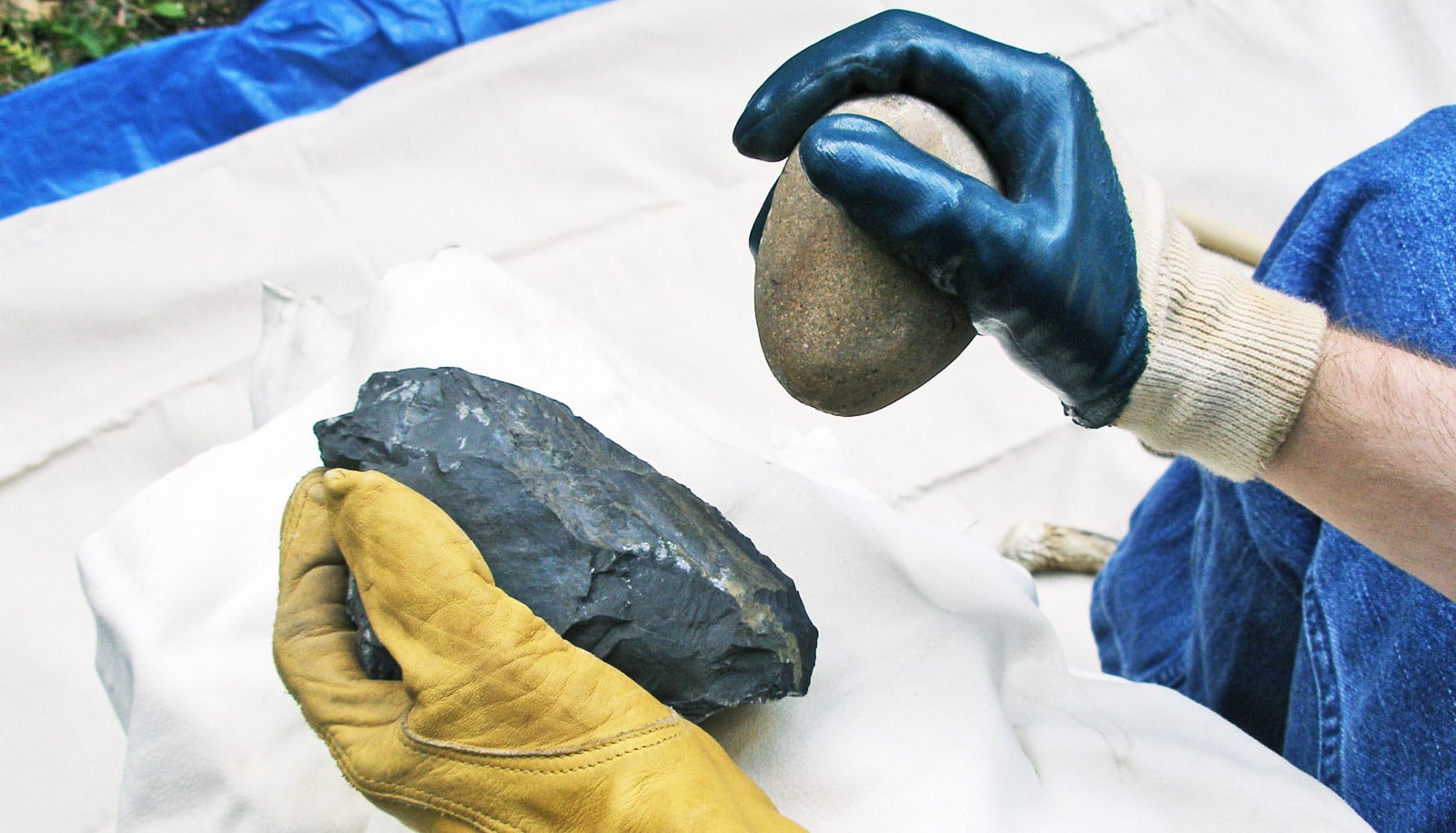By using highly advanced brain-imaging technology to observe modern humans making ancient tools, it is now believed that human-like ways of thinking may have emerged as early as 1.8 million years ago.
The findings place the appearance of human-like cognition at the emergence of Homo erectus, an early apelike species of human first found in Africa whose evolution predates Neanderthals by nearly 600,000 years.
“This is a significant result because it’s commonly thought our most modern forms of cognition only appeared very recently in terms of human evolutionary history,” says Shelby S. Putt, a postdoctoral researcher with The Stone Age Institute at Indiana University, and first author of the study in the journal Nature Human Behavior.
“But these results suggest the transition from apelike to human-like ways of thinking and behaving arose surprisingly early.”
Did making stone tools get people talking?
The conclusions are based on brain activity in modern individuals who were taught to create two types of ancient tools: simple Oldowan-era “flake tools”—little more than broken rocks with a jagged edge—and more complicated Acheulian-era hand axes, which resemble a large arrowhead. Both are formed by smashing rocks together using a process known as “flintknapping.”
Oldowan tools, which first appeared about 2.6 million years ago, are among the earliest used by humanity’s ancestors. Acheulian-era tool use dates from 1.8 million to 100,000 years ago.
Neuroarchaeologists need to look to modern humans to understand how pre-human species evolved cognition since the act of thinking—unlike fossilized bones or ancient artifacts—leave no physical trace in the archaeological record.
Until recently, the methods used to conduct studies on modern humans crafting ancient tools were limited by brain imaging technology. Previous studies depended on placing people within the confines of a functional magnetic resonance imaging machine to observe their brain activity while watching videos of people crafting tools.
‘Hobbit’ skull points to Down syndrome, not new species
The new study used more advanced functional near-infrared spectroscopy—a device that resembles a lightweight cap with numerous wires used to shine highly sensitive lasers onto the scalp—to observe brain activity in people as they learned to craft both types of tools with their hands.
In the study, 15 volunteers were taught to craft both types of tools through verbal instruction via videotape. An additional 16 volunteers were shown the same videos without sound to learn toolmaking through nonverbal observation. The experiments took place in the lab of John P. Spencer at the University of Iowa, where Putt earned her PhD.
Brain scans showed visual attention and motor control were required to create the simpler Oldowan tools. A much larger portion of the brain was engaged in the creation of the more complex Acheulian tools, including regions of the brain associated with the integration of visual, auditory, and sensorimotor information; the guidance of visual working memory; and higher-order action planning.
“The fact that these more advanced forms of cognition were required to create Acheulean hand axes—but not simpler Oldowan tools—means the date for this more humanlike type of cognition can be pushed back to at least 1.8 million years ago, the earliest these tools are found in the archaeological record,” Putt says.
“Strikingly, these parts of the brain are the same areas engaged in modern activities like playing the piano.”
Coauthors are from the University of East Anglia and the University of Iowa. The Wenner-Gren Foundation; the Leakey Foundation; Sigma Xi, the Scientific Research Society; the American Association of University Women; and the University of Iowa funded the work.
Source: Indiana University



